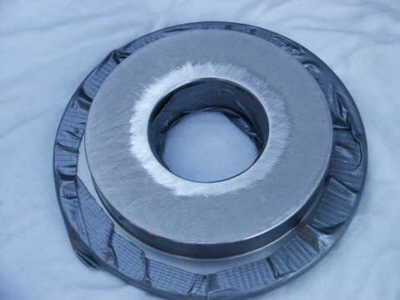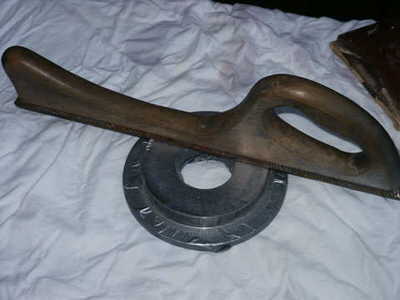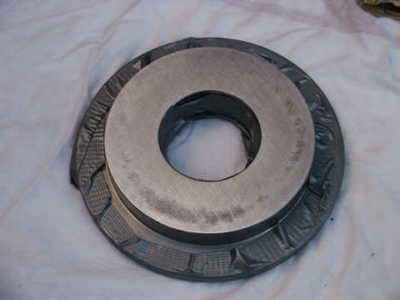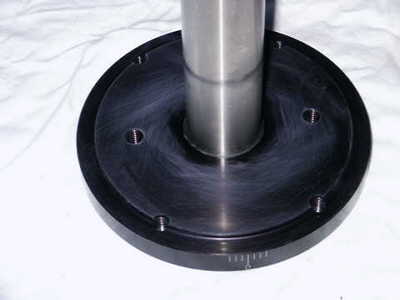One of the things about the G11 that bothered me was the weak clutch performance. After reading several articles in the Losmandy news group, it appears
a few people have the same problem. Though the mount seemed to track fine, the major annoyance was if you accidentally bumped into the OTA, even slightly, the tube moved enough to knock the target I was attempting to image off center, or knocked the guide star out of the field.
This happened more than once no matter how hard I tried not to touch the OTA in any way.
I took the mount apart twice to examine the disk for any signs of grease or oil, which there were none. Even re-cleaning the clutch areas proved useless.
In order to get semi-tight clamping force I had to tighten the clutch until the clutch couldn't be turned no more because it was bottomed out.
As a test to see if this excessive tightening was causing any rotation problems, I removed the OTA and weights and tightened the clutch as tight as I had to in order to get decent clamping force, I slowly rotated the RA axis.
What I could feel was a very intermitting flat spot, though it couldn't be reproduced in the same area. This pointed to the most likely possibility of one of the thrust bearing needle rollers not turning momentarily from excessive bearing compression load.
Time to increase friction.....
Getting the clutch surface ready for glass beading in an effort to increase friction without risking dimensional changes, I noticed the inner center portion of the
nylon clutch pad to look more compressed when compared to the rest of the surface. I found it hard to believe that much surface area couldn't provide more friction to hold the
OTA in place from minor bumps. So out came the straight edge to take a closer look.
To my surprise (and disappointment), the straight edge revealed the center hub area to be higher that the rest of the surface. The straight edge didn't even contact the outer edge of the RA clutch surface area when resting squarely on the raised center due to the height difference.
I decided to use my Sheffield steel file that I use for auto body lead work and make a few passes to highlight the high and low areas of the surface. The metal shaved off showed a small ring in the center at first, which indicates the area was raised, which the straight edge showed.
After a short while shaving the surface, I decided to stop and take pictures and post the information on the web to share.




